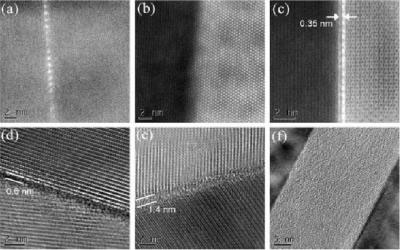| Jun 29, 2011 |
Lehigh University leads Department of Defense MURI grant for atomic-scale interphase research
|
|
(Nanowerk News) For the next five years, Martin Harmer, director of Lehigh's Center for Advanced Materials and Nanotechnology, will lead a team of scientists from Lehigh, Carnegie-Mellon, Clemson, Illinois and Kutztown universities to determine how the atomic structure of grain-boundary interphases—interphase complexions—affect the mechanical, electrical and thermal properties of a wide range of strategic engineering materials.
|
|
The project received $7.5 million in funding through the Department of Defense's Multidisciplinary University Research Initiative program and was one of only 27 projects chosen for funding from 113 proposals submitted this fiscal year.
|
|
Grain-boundary interphases have been studied for many years by numerous research groups. However, Shen Dillon, while working as a graduate student under the supervision of Harmer, was the first to identify six distinct interphase structures—complexions—at the grain boundaries in pure and doped polycrystalline alumina. The high resolution images needed to identify these interphase complexions were obtained using aberration-corrected transmission electron and scanning transition electron microscopes. Since then, complexions have been identified in other ceramics and metal alloys.
|
 |
| Lehigh University researchers identified six distinct interphase structures -- complexions -- at the grain boundaries in pure and doped polycrystalline alumina. Funded research will create entirely new classes of materials that avoid these imperfections.
|
|
"During processing, the transition from one type of complexion to another can lead to abnormal grain growth," Harmer says. "This is a major problem when you want to produce a high quality material with a uniform grain size and must be avoided when fabricating a nano-grained material."
|
|
With the help of Greg Rohrer's research group at Carnegie Mellon University, by combining theoretical thermodynamic models with experimental observations, they were able to show that such detrimental transitions could be prevented by carefully controlling the amount of a particular dopant and the temperature during processing.
|
|
"This new funding will allow us to extend our studies to determine the role that interphase complexions play in the properties of a wide range of materials such as nickel alloys and tungsten carbide—cobalt composites whose properties are well known," Harmer says. "Our ultimate goal is the creation of entirely new classes of materials, such as, nano-grained metal-complexionized ceramics that exhibit both the hardness of a ceramic and superior toughness of a metal. Such a combination is not yet available even with today's most advanced material systems."
|
|
Other participants in this project are Helen Chan and Jeff Rickman from Lehigh University, Greg Rohrer, Anthony Rollett and Michael Widom from Carnegie Mellon University, Jian Luo from Clemson University, Shen Dillon from University of Illinois and Andrea Harmer from Kutztown University. The Office of Naval Research is the DoD Agency funding this project.
|

